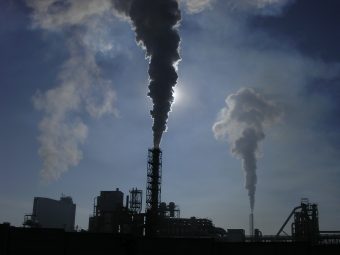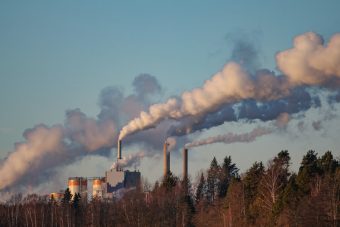
With the 2022 Emissions Gap Report due to be released in October this year ahead of the United Nations Climate Change Conference (COP27) in Egypt, the focus is on how fast countries can reduce greenhouse gas emissions to avoid the worst effects of the climate crisis.
So, how do countries measure their emissions, and how are those measurements checked for accuracy? We took a deep dive to find out more:
What are greenhouse gas emissions and why are they important?
Greenhouse gases are gases that trap heat in the atmosphere – hence the ‘greenhouse’ name. The main greenhouse gases are carbon dioxide, methane, nitrous oxide, and the fluorinated gases still commonly used in refrigerators and air conditioners. When greenhouse gases are released into the atmosphere, they trap heat which changes our climate in multiple ways.
These changes will affect everything from surface air and ocean temperatures to precipitation and sea acidification. A warmer climate brings a host of risks from increased drought and wildfires to rising sea levels and heat-related illnesses and deaths. If warming increases 2°C to 3°C by the end of the century, it is likely that there will be irreversible changes to our climate systems.
What causes these emissions?
While many greenhouse gases are naturally occurring, it is the increased emissions from human activities that are causing global warming. The main emissions come from the burning of fossil fuels, such as coal, oil and gas, for the energy that we rely on to heat (and cool) our homes, power our cars and buses, cook our food and make many of the products we take for granted.
More:
Why do countries need to measure their greenhouse gas emissions?
As the saying goes, what doesn’t get measured doesn’t get managed. It is vital that countries understand where their emissions are coming from so they can reduce them. Under the Paris Agreement, countries collectively agreed to reduce their emissions, and each country submitted a Nationally Determined Contribution (NDC). NDCs are essentially national climate action plans that include different types of targets for reducing greenhouse gas emissions. Some plans define how to reach specific targets by 2030, while others indicate a date their emissions will peak but don’t include specific emissions reduction targets.
The Paris Agreement has a strong focus on transparency so countries can monitor, verify and report on their NDC implementation progress, with the first national transparency reports due in 2024. In addition, the Paris Agreement includes provisions for countries to update their NDC every five years.

However, during COP26 in Glasgow last year, countries agreed to speed up cuts in their emissions before 2030, with the aim of keeping the average global temperature rise to below 1.5°C. And while many countries submitted new or updated NDCs with slightly increased ambitions, these are still not enough to keep global warming at or under 1.5-degrees.
How do countries calculate their emissions?
Countries report their emissions through what is known as a ‘bottom up’ approach, where national emissions are estimated by combining data on types of activity with the emissions typically produced by those activities. So, if you know how much carbon dioxide steelmaking produces, and you know how much steel is produced in your country, you can estimate the total quantity of emissions from the steel sector.
Are those calculations accurate?
There are internationally agreed guidelines developed by the Intergovernmental Panel on Climate Change that specify how this kind of accountancy should be done.
Are emissions being cut quickly enough?
In short, the answer is no. As laid out in UNEP’s Emissions Gap Report 2021, new national climate pledges combined with other mitigation measures put the world on track for a global temperature rise of 2.7°C by the end of the century, which would lead to devastating consequences for the planet. All countries, but particularly those in the developed world, need to cut emissions faster.
What needs to happen now?
The Emissions Gap Report highlighted the fact that global emissions need to fall by 45 to 50 percent by 2030 in order to ensure temperatures don’t rise above 1.5°C by 2100. In short, the world needs to act — and quickly.
Source: UNEP



